Abstract
The medical belief system of lower class black Americans reflects their social, political and economic marginality in the larger society. A moderate life-style is regarded as the basis for good health with special emphasis on protecting one's body from cold, keeping it clean inside and out and maintaining a proper diet. Illnesses and other life events are classified as “natural” or “unnatural.” Natural illnesses result from the effects of cold, dirt and improper diet on the body causing changes in the blood. A number of beliefs about blood and its functions have important clinical implications for the treatment of hypertension and venereal disease and for family planning. Natural illnesses also result from divine punishment and serve as an instrument of social control. Unnatural illnesses are the result of witchcraft and reflect conflict in the social network. It is believed that physicians do not understand and cannot effectively treat such illnesses, but a variety of traditional healers offer help to the victims. Physicians must elicit such beliefs if they are to interact effectively and sensitively with black patients. Social change is required, however, to eliminate the feelings of powerlessness at the root of many of the health problems of poor black Americans.
Full text
PDF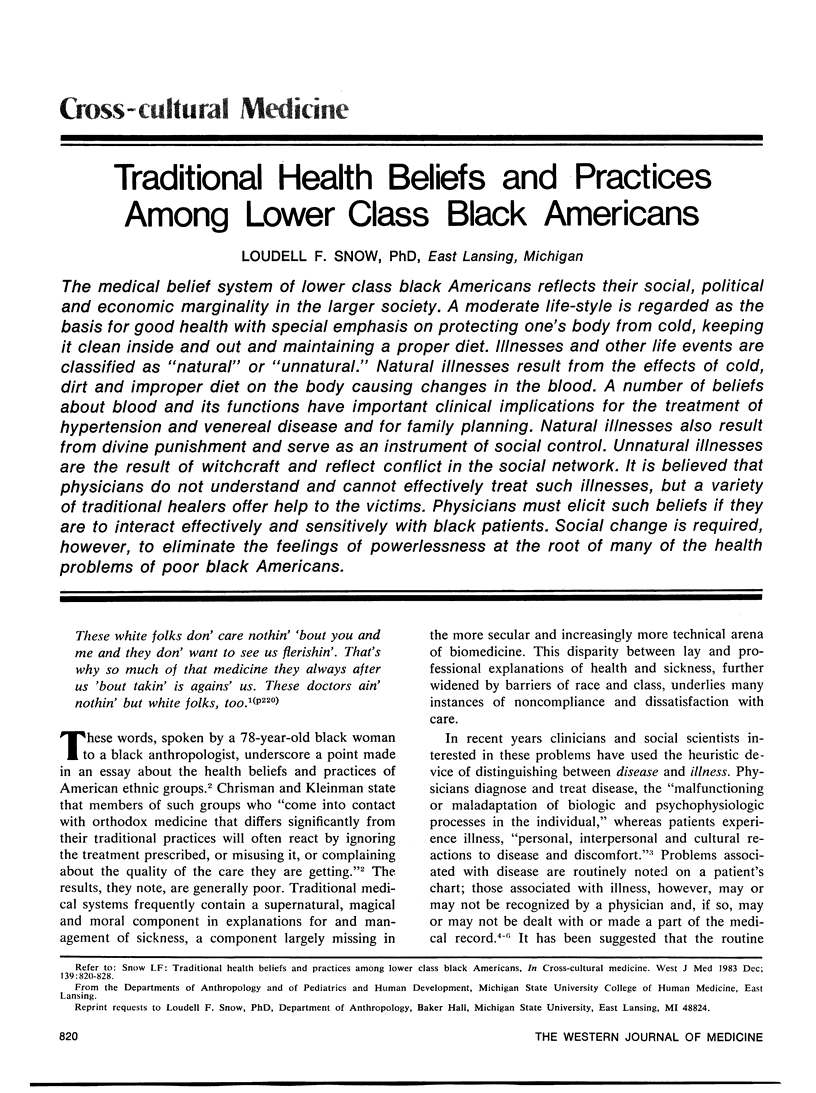
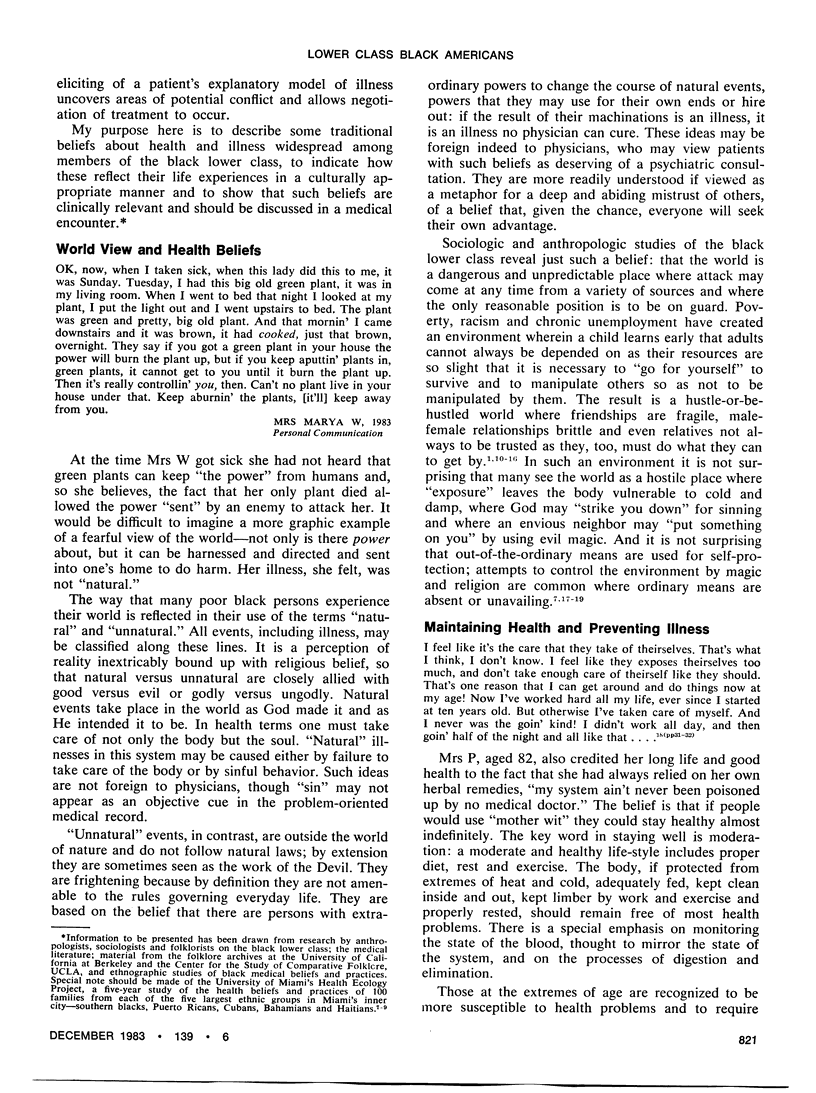

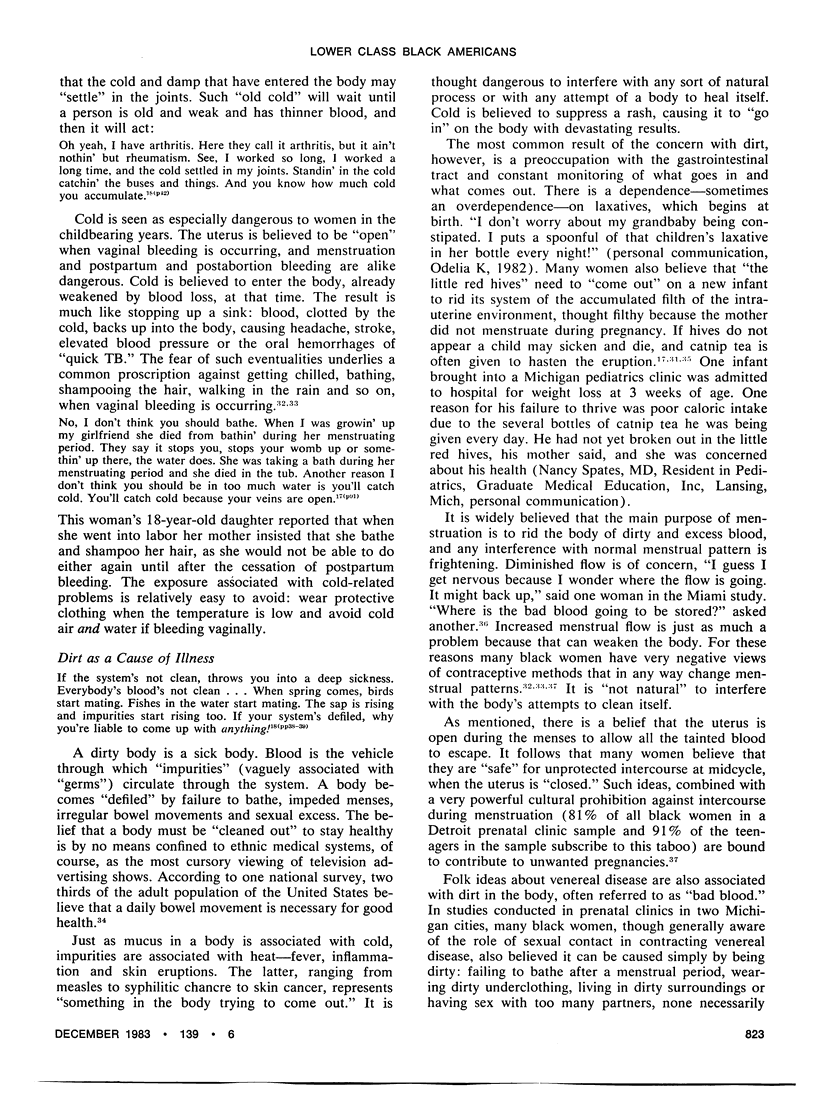
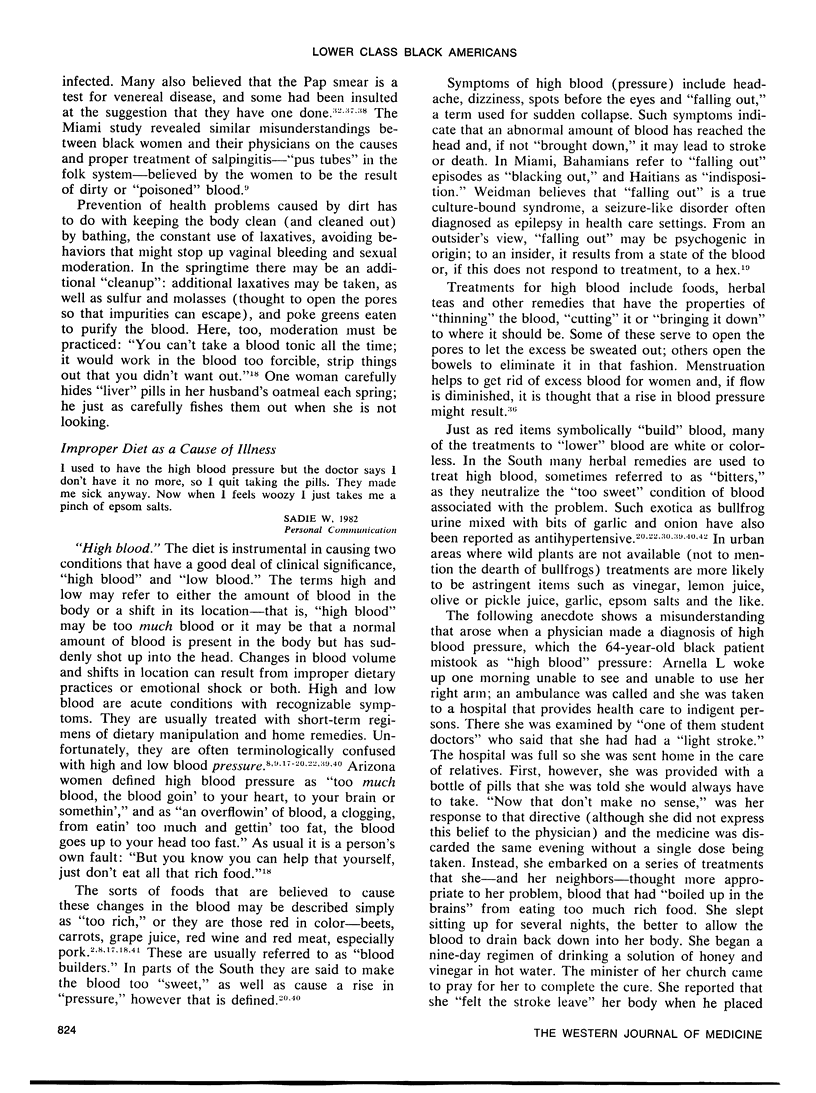
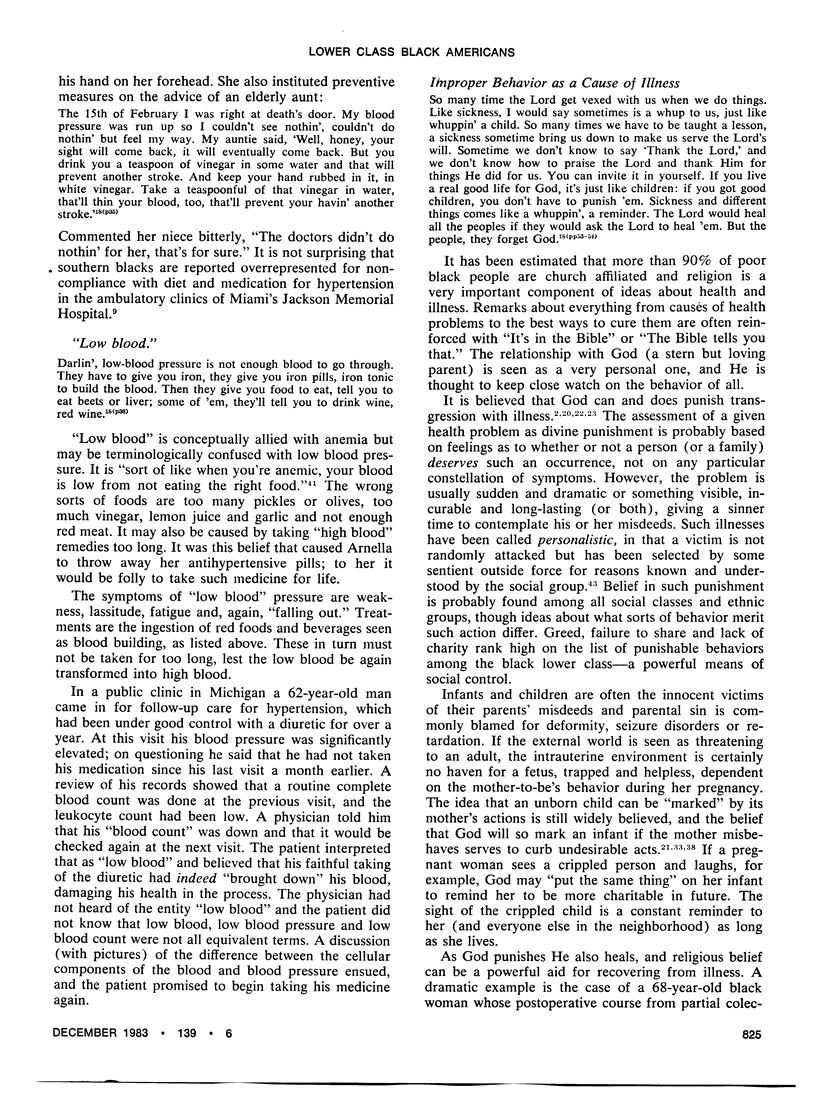

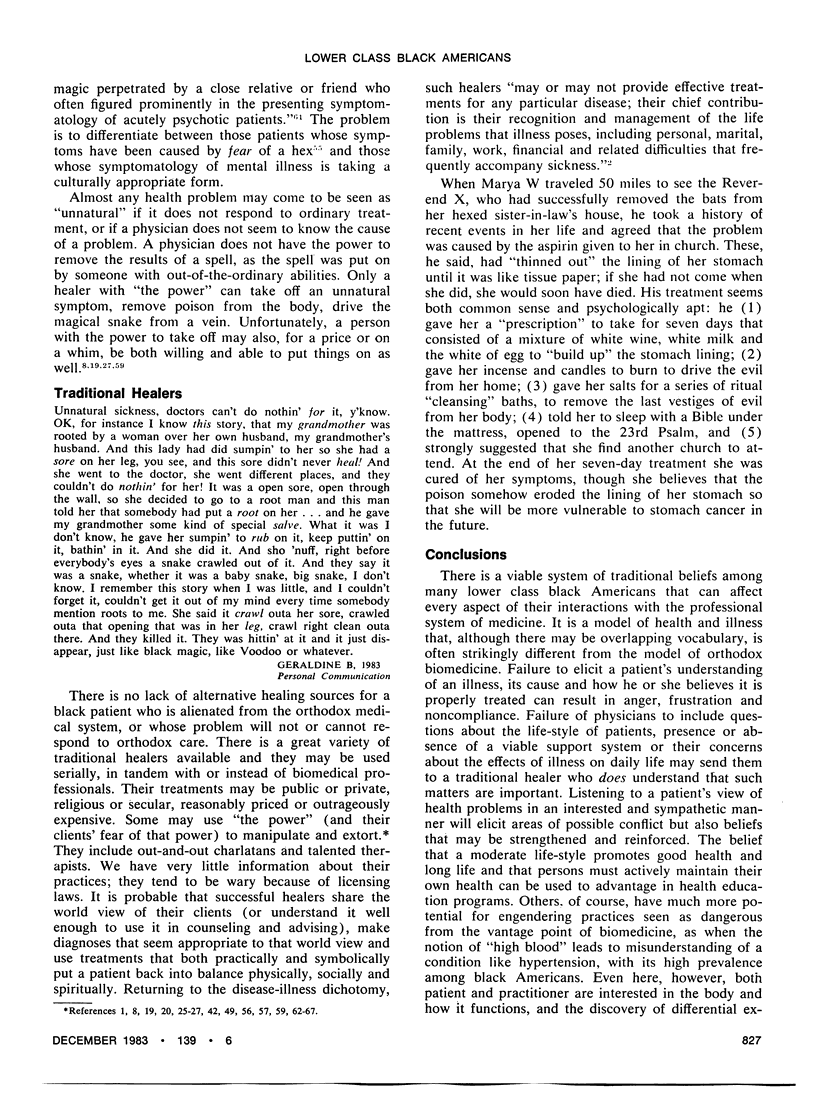
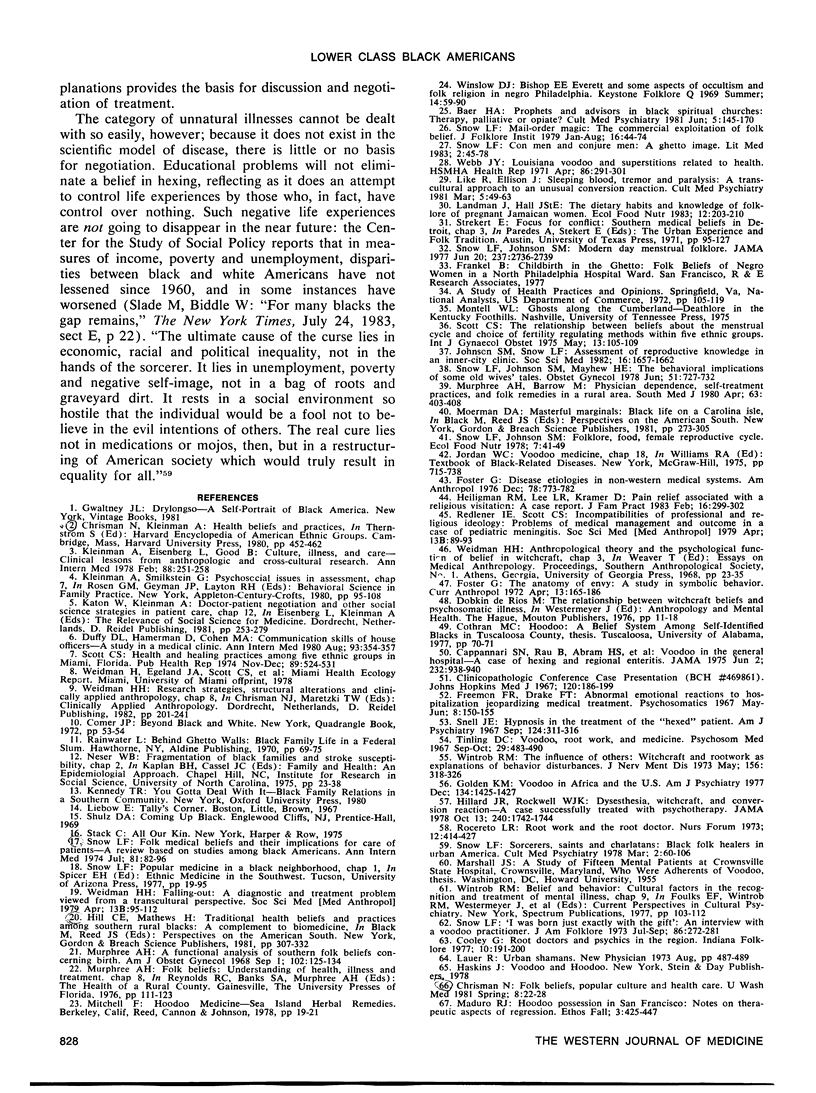
Selected References
These references are in PubMed. This may not be the complete list of references from this article.
- Baer H. A. Prophets and advisors in black spiritual churches: therapy, palliative, or opiate? Cult Med Psychiatry. 1981 Jun;5(2):145–170. doi: 10.1007/BF00055418. [DOI] [PubMed] [Google Scholar]
- Cappannari S. C., Rau B., Abram H. S., Buchanan D. C. Voodoo in the general hospital. A case of hexing and regional enteritis. JAMA. 1975 Jun 2;232(9):938–940. [PubMed] [Google Scholar]
- Duffy D. L., Hamerman D., Cohen M. A. Communication skills of house officers. A study in a medical clinic. Ann Intern Med. 1980 Aug;93(2):354–357. doi: 10.7326/0003-4819-93-2-354. [DOI] [PubMed] [Google Scholar]
- Golden K. M. Voodoo in Africa and the United States. Am J Psychiatry. 1977 Dec;134(12):1425–1427. doi: 10.1176/ajp.134.12.1425. [DOI] [PubMed] [Google Scholar]
- Heiligman R. M., Lee L. R., Kramer D. Pain relief associated with a religious visitation: a case report. J Fam Pract. 1983 Feb;16(2):299–302. [PubMed] [Google Scholar]
- Hillard J. R., Rockwell W. J. Dysesthesia, witchcraft, and conversion reaction. A case successfully treated with psychotherapy. JAMA. 1978 Oct 13;240(16):1742–1744. [PubMed] [Google Scholar]
- Johnson S. M., Snow L. F. Assessment of reproductive knowledge in an inner-city clinic. Soc Sci Med. 1982;16(19):1657–1662. doi: 10.1016/0277-9536(82)90089-2. [DOI] [PubMed] [Google Scholar]
- Kleinman A., Eisenberg L., Good B. Culture, illness, and care: clinical lessons from anthropologic and cross-cultural research. Ann Intern Med. 1978 Feb;88(2):251–258. doi: 10.7326/0003-4819-88-2-251. [DOI] [PubMed] [Google Scholar]
- Like R., Ellison J. Sleeping blood, tremor and paralysis: a trans-cultural approach to an unusual conversion reaction. Cult Med Psychiatry. 1981 Mar;5(1):49–63. doi: 10.1007/BF00049158. [DOI] [PubMed] [Google Scholar]
- Murphree A. H. A functional analysis of southern folk beliefs concerning birth. Am J Obstet Gynecol. 1968 Sep 1;102(1):125–134. doi: 10.1016/0002-9378(68)90444-4. [DOI] [PubMed] [Google Scholar]
- Murphree A. H., Barrow M. V. Physician dependence, self-treatment practices, and folk remedies in a rural area. South Med J. 1970 Apr;63(4):403–408. doi: 10.1097/00007611-197004000-00014. [DOI] [PubMed] [Google Scholar]
- Redlener I. E., Scott C. S. Incompatibilities of professional and religious ideology: problems of medical management and outcome in a case of pediatric meningitis. Soc Sci Med Med Anthropol. 1979 Apr;13B(2):89–93. doi: 10.1016/0160-7987(79)90002-4. [DOI] [PubMed] [Google Scholar]
- Rocereto L. R. Root work and the root doctor. Nurs Forum. 1973;12(4):414–426. doi: 10.1111/j.1744-6198.1973.tb00554.x. [DOI] [PubMed] [Google Scholar]
- Scott C. S. Health and healing practices among five ethnic groups in Miami, Florida. Public Health Rep. 1974 Nov-Dec;89(6):524–532. [PMC free article] [PubMed] [Google Scholar]
- Scott C. S. The relationship between beliefs about the menstrual cycle and choice of fertility regulating methods within five ethnic groups. Int J Gynaecol Obstet. 1975;13(3):105–109. doi: 10.1002/j.1879-3479.1975.tb00353.x. [DOI] [PubMed] [Google Scholar]
- Snell J. E. Hypnosis in the treatment of the "hexed" patient. Am J Psychiatry. 1967 Sep;124(3):311–316. doi: 10.1176/ajp.124.3.311. [DOI] [PubMed] [Google Scholar]
- Snow L. F. Folk medical beliefs and their implications for care of patients. A review bases on studies among black Americans. Ann Intern Med. 1974 Jul;81(1):82–96. doi: 10.7326/0003-4819-81-1-82. [DOI] [PubMed] [Google Scholar]
- Snow L. F., Johnson S. M., Mayhew H. E. The behavioral implications of some old wives' tales. Obstet Gynecol. 1978 Jun;51(6):727–732. [PubMed] [Google Scholar]
- Snow L. F., Johnson S. M. Modern day menstrual folklore. Some clinical implications. JAMA. 1977 Jun 20;237(25):2736–2739. [PubMed] [Google Scholar]
- Snow L. F. Sorcerers, saints and charlatans: black folk healers in urban America. Cult Med Psychiatry. 1978 Mar;2(1):69–106. doi: 10.1007/BF00052450. [DOI] [PubMed] [Google Scholar]
- Tinling D. C. Voodoo, root work, and medicine. Psychosom Med. 1967 Sep-Oct;29(5):483–490. doi: 10.1097/00006842-196709000-00007. [DOI] [PubMed] [Google Scholar]
- Webb J. Y. Louisiana voodoo and superstitions related to health. HSMHA Health Rep. 1971 Apr;86(4):291–301. [PMC free article] [PubMed] [Google Scholar]
- Weidman H. H. Falling-out: a diagnostic and treatment problem viewed from a transcultural perspective. Soc Sci Med Med Anthropol. 1979 Apr;13B(2):95–112. doi: 10.1016/0160-7987(79)90003-6. [DOI] [PubMed] [Google Scholar]
- Wintrob R. M. The influence of others: witchcraft and rootwork as explanations of behavior disturbances. J Nerv Ment Dis. 1973 May;156(5):318–326. [PubMed] [Google Scholar]


